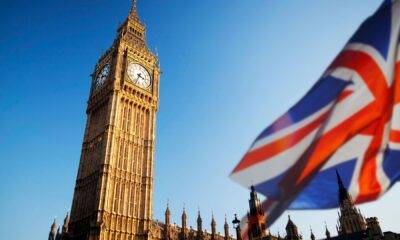

Remote Work
10 Things to Know Before Accepting a Remote Job Offer
April 19, 202410 Things to Know Before Accepting a Remote Job Offer Remote work has become increasingly popular...


Visas
The 6 Biggest Mistakes People Make When Applying for a UK Visa
April 15, 2024The 6 Biggest Mistakes People Make When Applying for a UK Visa Applying for a UK...


Work Abroad
The Worst Rookie Errors for First-Time Job Seekers in Canada
April 12, 2024The Worst Rookie Errors for First-Time Job Seekers in Canada Today, I’ll discuss fresh-faced job seekers...


Visas
5 Things to Know Before Applying for a UK Skilled Worker Visa
April 11, 20245 Things to Know Before Applying for a UK Skilled Worker Visa The UK Skilled Worker...


Work Abroad
The Worst Rookie Errors for First-Time UK Job Seekers
April 10, 2024The Worst Rookie Errors for First-Time UK Job Seekers Embarking on your first job search in...


Visas
Express Entry vs Family Sponsorship: Which Canada Visa is Better?
April 9, 2024Express Entry vs Family Sponsorship: Which Canada Visa is Better? Canada is a land of opportunities,...


Work Abroad
4 Best and Worst Cities for Jobs in Canada
April 8, 20244 Best and Worst Cities for Jobs in Canada In Canada, where you choose to work...


Visas
The 10 Biggest Mistakes People Make When Applying for a Canada Visa
April 5, 2024The 10 Biggest Mistakes People Make When Applying for a Canada Visa Getting a visa is...


Work Abroad
6 Things to Avoid During the UK Visa Application Process
April 4, 20246 Things to Avoid During the UK Visa Application Process Applying for a UK visa can...


Visas
Work Permit in Canada: Your Path To Employment
November 24, 2023What is a Canada Work Permit A work permit in Canada is like your golden ticket...


Visas
Companies offering Visa Sponsorship in Canada
October 19, 2023Companies Offering Visa Sponsorship in Canada When it comes to pursuing your career in Canada, understanding...


Visas
Canada Immigration Experts
October 24, 2023Canada Immigration Experts Canada, the land of maple syrup and breathtaking landscapes, has always been a...


Visas
The Secrets of Canadian Visa Consultancy: Your Path to Canada
October 23, 2023Canadian Visa Consultancy Canada is a popular destination for many due to its stunning landscapes, diverse...


Visas
Love Knows No Borders: Your Path to Permanent Residency in Canada by Marrying a Canadian Citizen
October 19, 2023Obtaining Permanent Residence in Canada by Marrying a Canadian Citizen In this complete guide, we will...


Visas
A comprehensive guide to UK Citizenship by Marriage
January 26, 2024UK Citizenship by Marriage For individuals who have found love and made their home in the...


Work Abroad
Top 20 High Paying Jobs in the UK
October 25, 2023Top 20 High Paying Jobs in the UK Are you looking to secure a high paying...


Visas
Clever Strategies for Immigrating to Canada in 2024: 13 Simple Approaches
October 9, 2023A comprehensive guide to Immigrating to Canada in 2024 Ever thought about making Canada your new...


Work Abroad
See the Top 10 High Demand Jobs in Canada 2024: No Certificates Needed!
October 15, 2023Top 10 High-Demand Jobs Without Certificates in Canada 2024 High-demand job opportunities in Canada 2024 are...


Work Abroad
15 Jobs that Require No Certificate in Canada this 2024
January 13, 202415 Jobs that Require No Certificate in Canada this 2024 – Number 5 and 2 is...

























